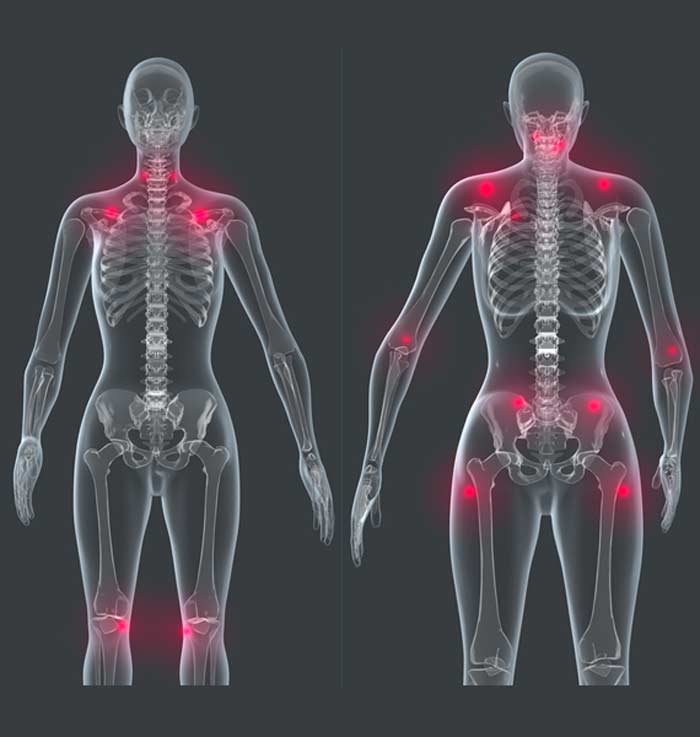
Fibromyalgia is a complex, chronic medical condition that causes a wide variety of symptoms throughout the entire body.
Widespread pain is the main symptom of fibromyalgia, but it can produce some cognitive issues as well. The condition is very common, affecting as much as six percent of the world’s population. Although anyone can become afflicted with fibromyalgia, it is significantly more common in women than in men.
Symptoms of Fibromyalgia
Fibromyalgia pain is highly nonspecific. A generalized, full-body ache is the most common symptom. Pain from fibromyalgia can occur anywhere in the muscles or joints. The pain may be experienced as either sharp or dull, and may be throbbing or constant. This pain does not strongly favor any specific region of the body, but it may not be felt everywhere all of the time. In addition to aches and pains throughout, fibromyalgia sufferers may experience areas on the body that are tender to the touch. Numbness and tingling of the limbs may be present as well.
Fibromyalgia may produce non-physical symptoms in addition to the more familiar physical symptoms. Patients often experience problems with concentration, memory and mood. Insomnia and fatigue are also common. This combination of cognitive symptoms is sometimes referred to as “fibro fog.” Anxiety and depression are both common in people with fibromyalgia, however it remains unclear whether these are symptoms or possible causes.


Causes and Risks
The specific cause of fibromyalgia currently remains unknown, but it is generally believed that a change occurs in the central nervous system that causes the body to process pain signals differently. Research has shown that hormonal imbalances are likely at play in people with the condition. Fibromyalgia patients have been shown to have reduced levels of dopamine, serotonin and noradrenaline, all of which play important roles in regulating mood and behavior.
There appears to be a genetic component to fibromyalgia, though the link is unclear. People with immediate family members who suffer from the disorder are much more likely to develop it themselves. Specific trigger events — both mental and physical — may also play a role. Environmental risks for the disorder may include physical or mental illness as well as sedentary behavior. There is currently no test available for the diagnosis of fibromyalgia. Because it produces such nonspecific and widespread symptoms, diagnosis involves ruling out other underlying health problems that may be causing the symptoms.
How is Fibromyalgia Treated?
There is no cure for fibromyalgia. Because the symptoms vary so widely from person to person, there is no universally accepted treatment for the condition. Each patient experiences the disorder differently. Treatment consists of managing whatever symptoms a given patient may have. It can include over the counter or prescription pain relievers as well as mood-regulating medications. A doctor may also recommend behavioral changes and home remedies — such as application of heat or cold — to help manage aches and pains. Some fibromyalgia patients may benefit from counseling and physical therapy, depending on their symptoms.
